T-90 MBT: Russian Powerhouse or Pure Propaganda?
December 30th, 2023
7 minute read
The T-90 is a third generation Russian tank designed by the Soviet Union to replace the T-72. It was seen by some as the equal to the M1A1 Abrams and the Leopard 2 at the end of the Cold War. Yet modern combat in the Russo-Ukrainian War suggests the T-90 is not the formidable beast it wanted to be. Peter Suciu takes a look at these tanks and their battlefield performance.
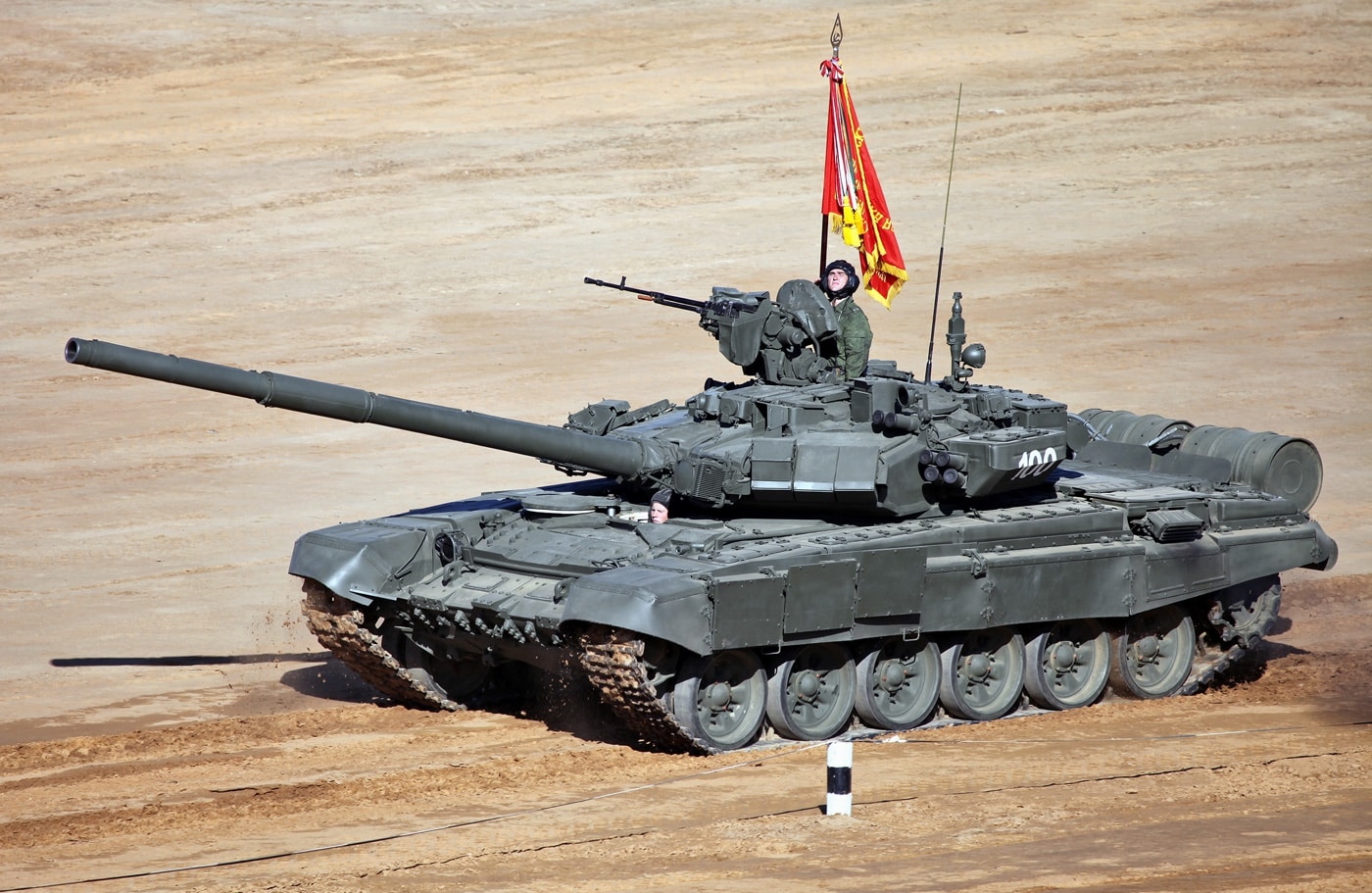
In the middle of April, photos circulated across Reddit and other social media platforms of a Russian T-90A main battle tank (MBT) that had reportedly been captured by Ukrainian forces. The fact that Kyiv’s forces had secured one of the Kremlin’s most capable MBTs was already noteworthy — but what made the posts online all the more fascinating was that the T-90A was spotted on a trailer at a truck stop off U.S. Interstate 10 in Roanoke, Louisiana.
An employee at Peto’s Travel Center and Casino had apparently snapped photos of the tank on the trailer after the truck hauling it had broken down.
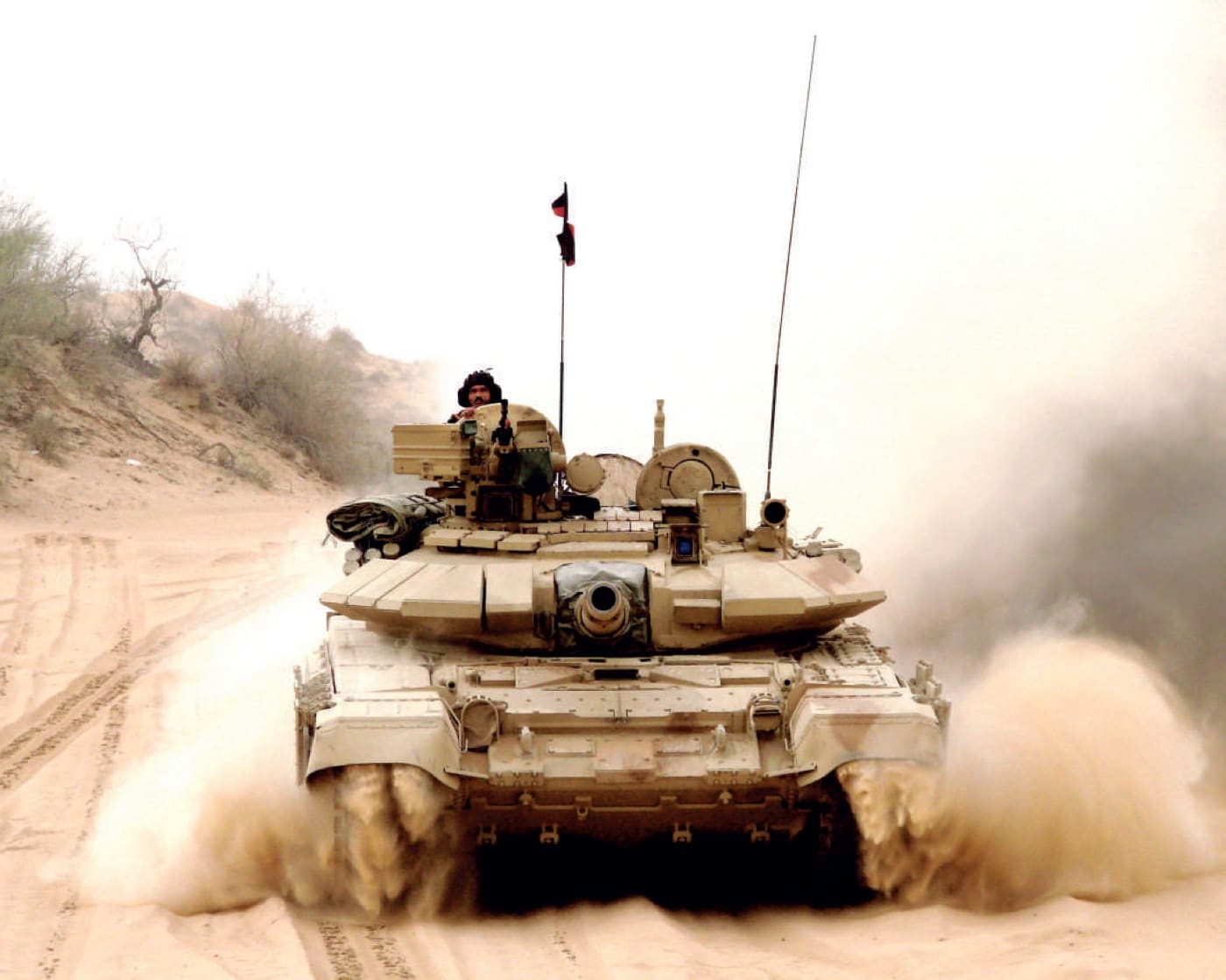
The images were first shared on the “Tank Porn” Reddit channel, and soon gamers of the popular online tank simulation War Thunder spotted the posts. After much digging, online sleuths determined:
- the T-90 was part of the Russia’s 27th Separate Guards Motorized Rifle Brigade, 1st Guards Tank Army,
- had been abandoned in Kurylivka, Kharkiv Oblast in September 2022, and
- was captured by Ukraine in the Russo-Ukrainian War
Pentagon officials confirmed that the Aberdeen Proving Ground was the intended destination for the T-90.
“I can confirm that a T-90 tank was being transported to Aberdeen Proving Grounds, Maryland, when the truck transporting it suffered a mechanical issue. That issue has been fixed and the item is secure,” Sue Gough, a Pentagon spokesperson told The War Zone via an email.
Last Soviet Tank, or First Russian Tank?
The T-90 MBT could be seen as either the last Soviet tank or the first Russian one — and it is a bit of a “chicken and the egg” situation, depending on how you look at it. Development of the third-generation armored vehicle began in the 1980s as the Soviet military sought to replace the T-64, T-72 and T-80 series of MBT’s.
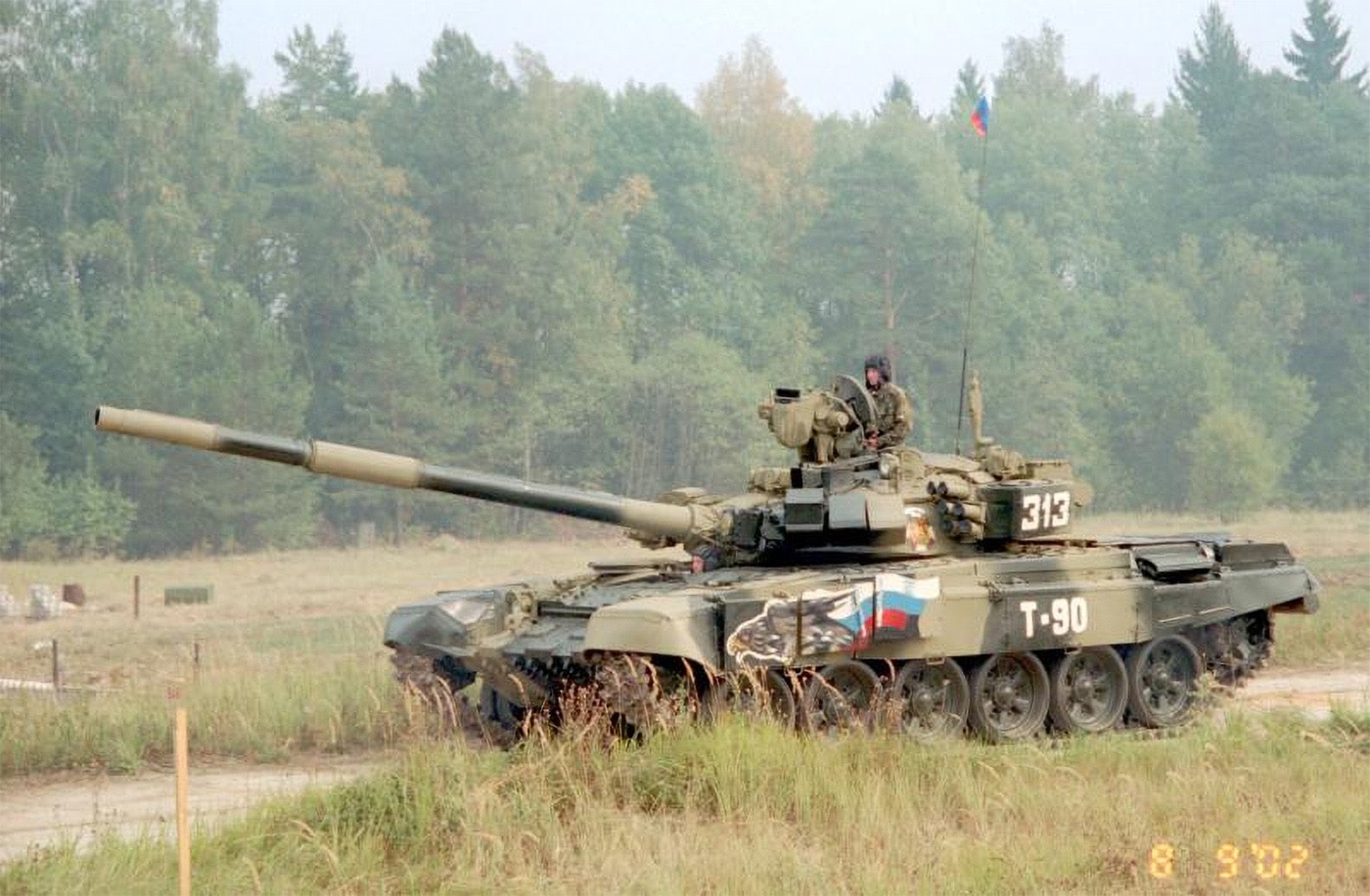
However, Moscow was considerably cash-strapped at the end of the Cold War and the T-72 platform was selected to serve as the basis for the new generation of tanks. Even before the dissolution of the Soviet Union in 1991, tank production had also significantly dwindled.
The Chelyabinsk Tractor Plant, which had produced tanks since the Second World War — and even earned the Order of Kutuzov, 1st Class, the Order of Lenin, the Order of the Red Star, and other awards for its efforts to produce the T-34 and other tanks during the conflict — ceased tank manufacturing in 1989. Likewise, the Kirov plant in Leningrad (now St. Petersburg) cased the production of tanks in 1990.
The remaining tank plants in Omsk and Nizhni-Tagil, each state-owned, also suspended production due to costs.
Yet, the first prototype of the T-90 reportedly was still rolled out in 1990 — becoming both the final Soviet-designed tank and the first MBT to enter service in the new post-Soviet Russian Federation. The first production models were subsequently delivered to the Russian Army in 1994, and manufacturing of new models has continued since — albeit at rates far smaller than Cold War-era tanks.
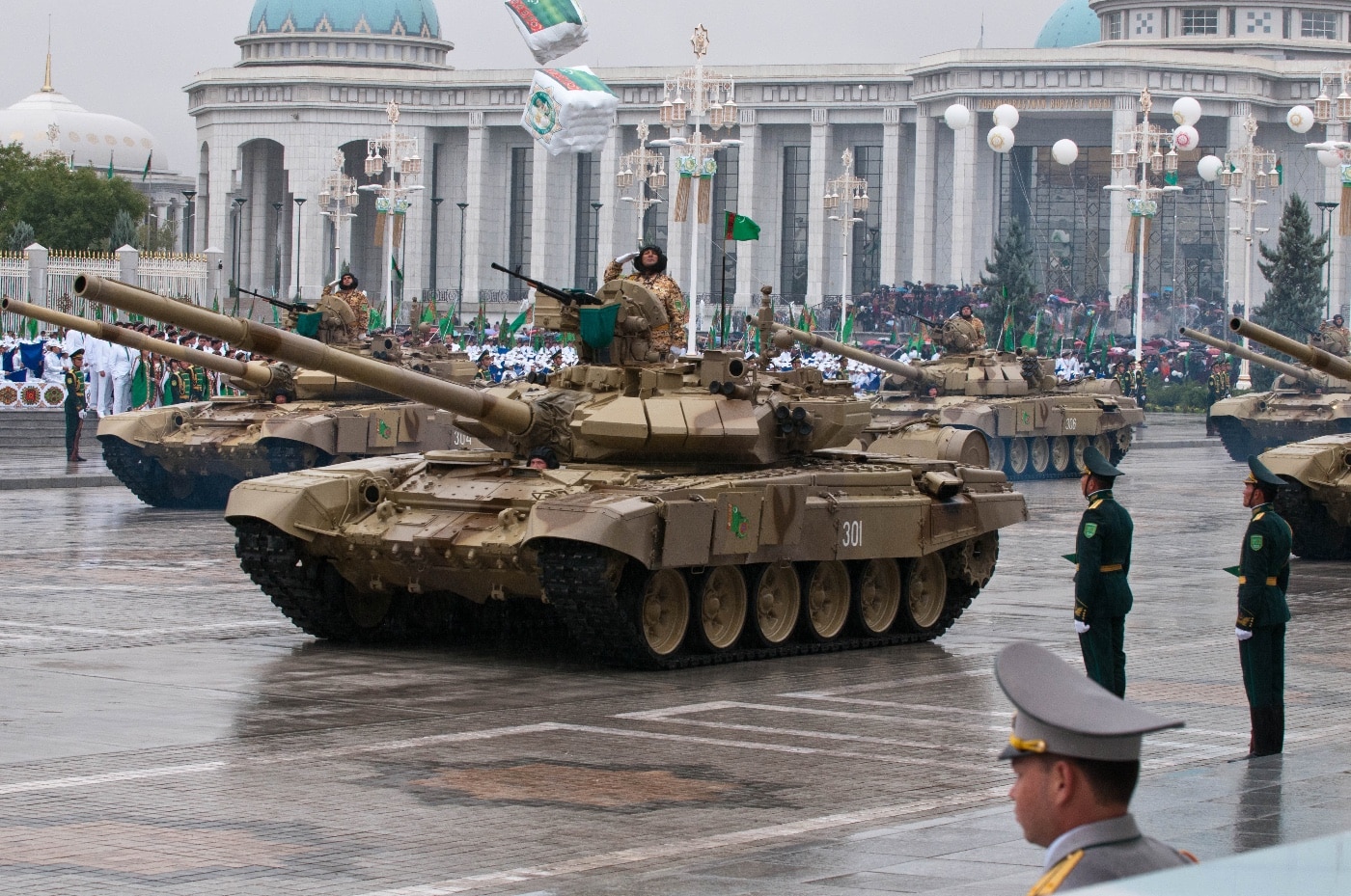
In fact, while the Soviets produced more than 25,000 T-72s, at least 13,000 T-64s, some 23,000 T-62s, and a staggering 63,000 T-54/55’s; only around 1,000 T-90s have been manufactured to date. Moreover, fewer than 200 were even in service in 2000.
More Evolutionary Than Revolutionary
The T-90 could fittingly be described as an evolutionary improvement of the T-72. It is far from a revolutionary design, and it speaks to the situation that Soviet designers faced in the 1980s as well as the economic realities of the 1990s in post-Soviet Russia.
This isn’t to say that the T-90 isn’t a capable MBT.
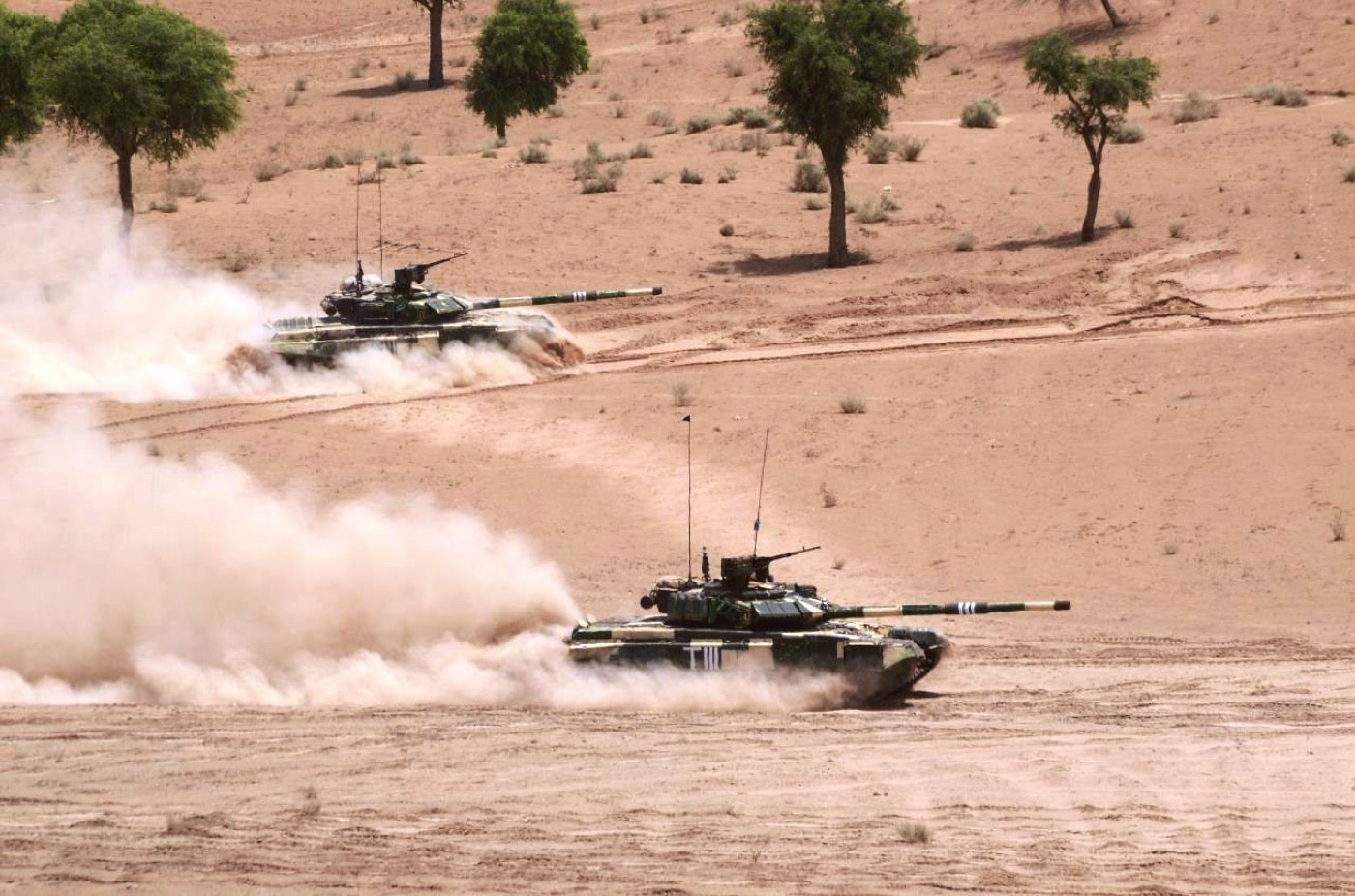
It is armed with a 125mm smoothbore gun fitted with a fume extractor and surrounded by a thermal jacket. As with the T-72, the T-90 is equipped with an autoloader. It can hold 22 projectiles and charges, while an additional 21 rounds can be stored in the hull. According to Rosoboronexport, the autoloader can ensure a high rate of fire of up to seven to eight rounds per minute. Yet, it could make the tank susceptible to the so-called “jack-in-the-box” effect should an anti-tank round strike the turret — and blow it clean off the hull if the rounds inside are set off.
The 2A46 125mm main gun — the same used with the T-72 and T-80 — can fire armor-piercing fin-stabilized discarding sabot (APFSDS), high-explosive anti-tank (HEAT), and high-explosive fragmentation (HE-Frag) rounds. In addition, the gun can be used to launch a laser-guided Refleks missile, which is equipped with a tandem warhead that allows it to attack tanks fitted with explosive reactive armor (ERA).
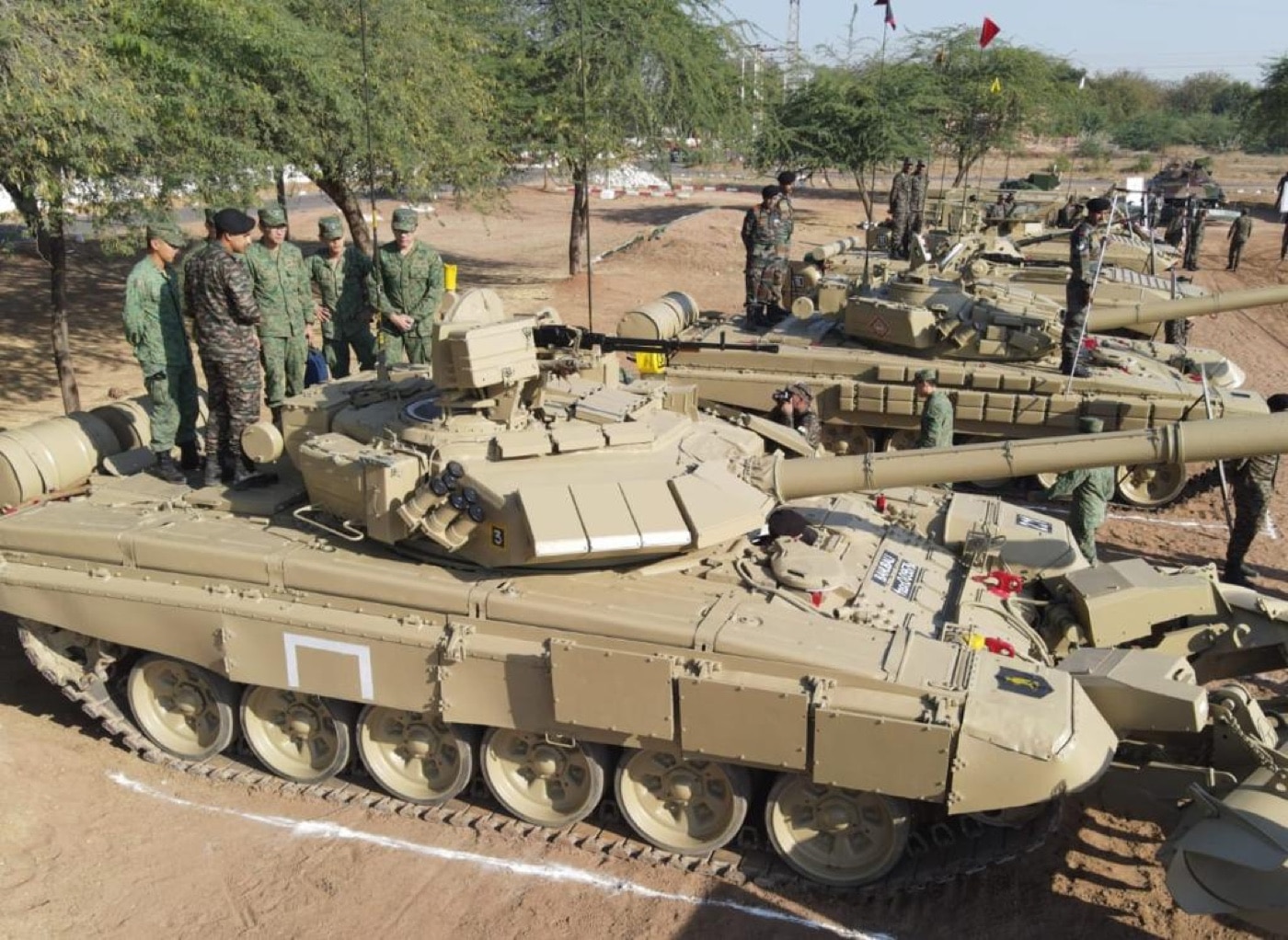
Secondary armament of the T-90 includes a PKT 7.62mm machine gun, and a remote-controlled 12.7mm (.50 caliber) machine gun mounted on the roof. There are also six single-barreled smoke grenade dischargers on each side of the turret.
The tank’s armor consists of a steel-composite-reactive blend Kontakt-5 ERA, which offers protection from chemical and kinetic energy weapons. Those models produced after 1996 also feature a fully welded turret.
Unlike the T-80, which was powered by a gas turbine engine, the T-90 is equipped with a V-84MS 12-cylinder four-stroke diesel engine, with a multi-fuel capability, enabling it to run on diesel, gasoline, kerosene or benzene. If it burns, it can probably be used with the T-90. The engine provides the MBT with a rather sluggish speed of just 37 mph (60 km/h) on the road, while it has a range of 342 miles (550 km).
The T-90 has a crew of three, made up of a commander, driver and gunner.
Combat History
The T-90 was reportedly first deployed in combat during the 1999 Chechen invasion of Dagestan. However, the models employed were actually the T-90S, which was originally intended for export to India.
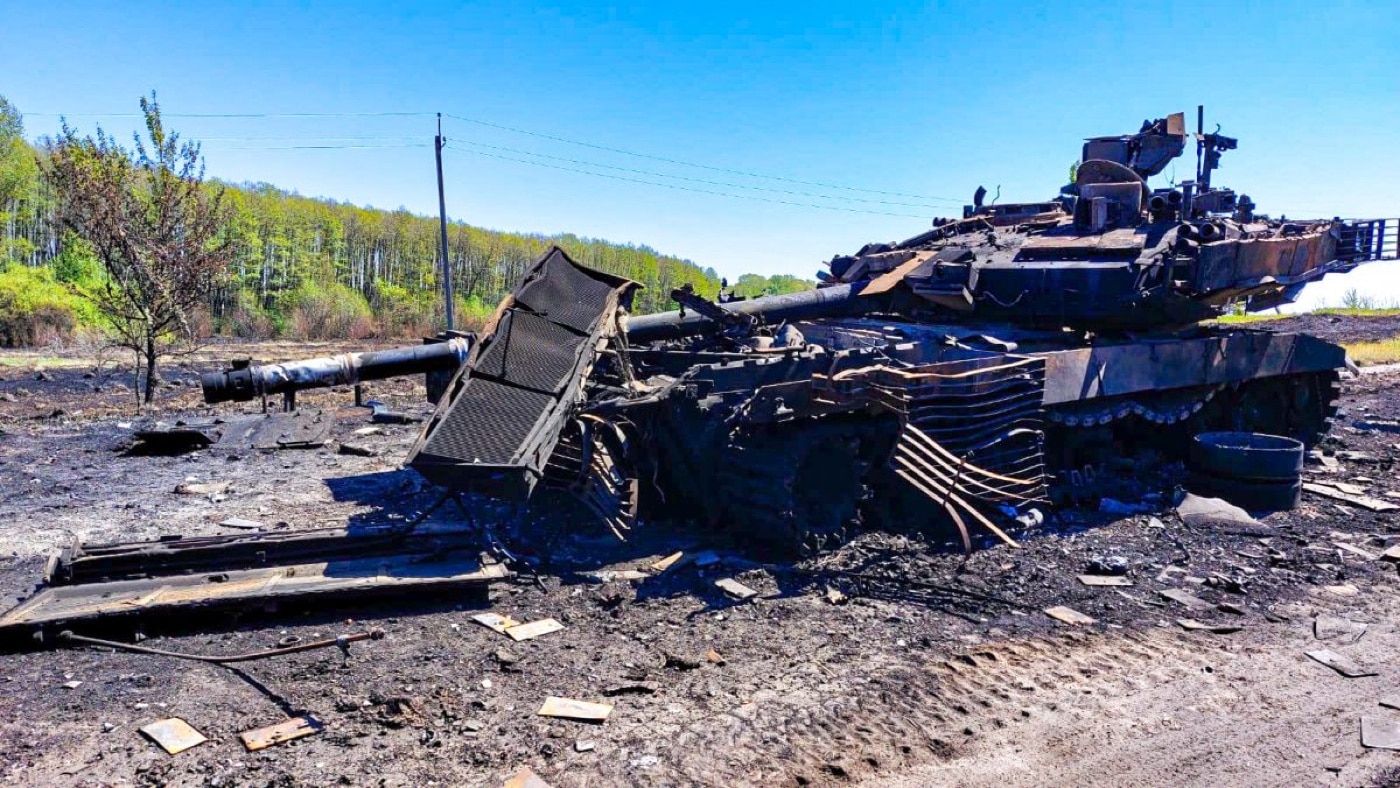
The tank’s service history in that conflict was mixed. During its baptism of fire, Chechen fighters would repeatedly attempt to strike the vehicles with RPGs and other weapons — using the first round to trigger the ERA, while subsequent shots would hit the exposed tank armor. There were reports at the time that at least one T-90 was able to remain in service despite taking seven RPG rounds, but many other Russian tanks of the class were believed to be destroyed.
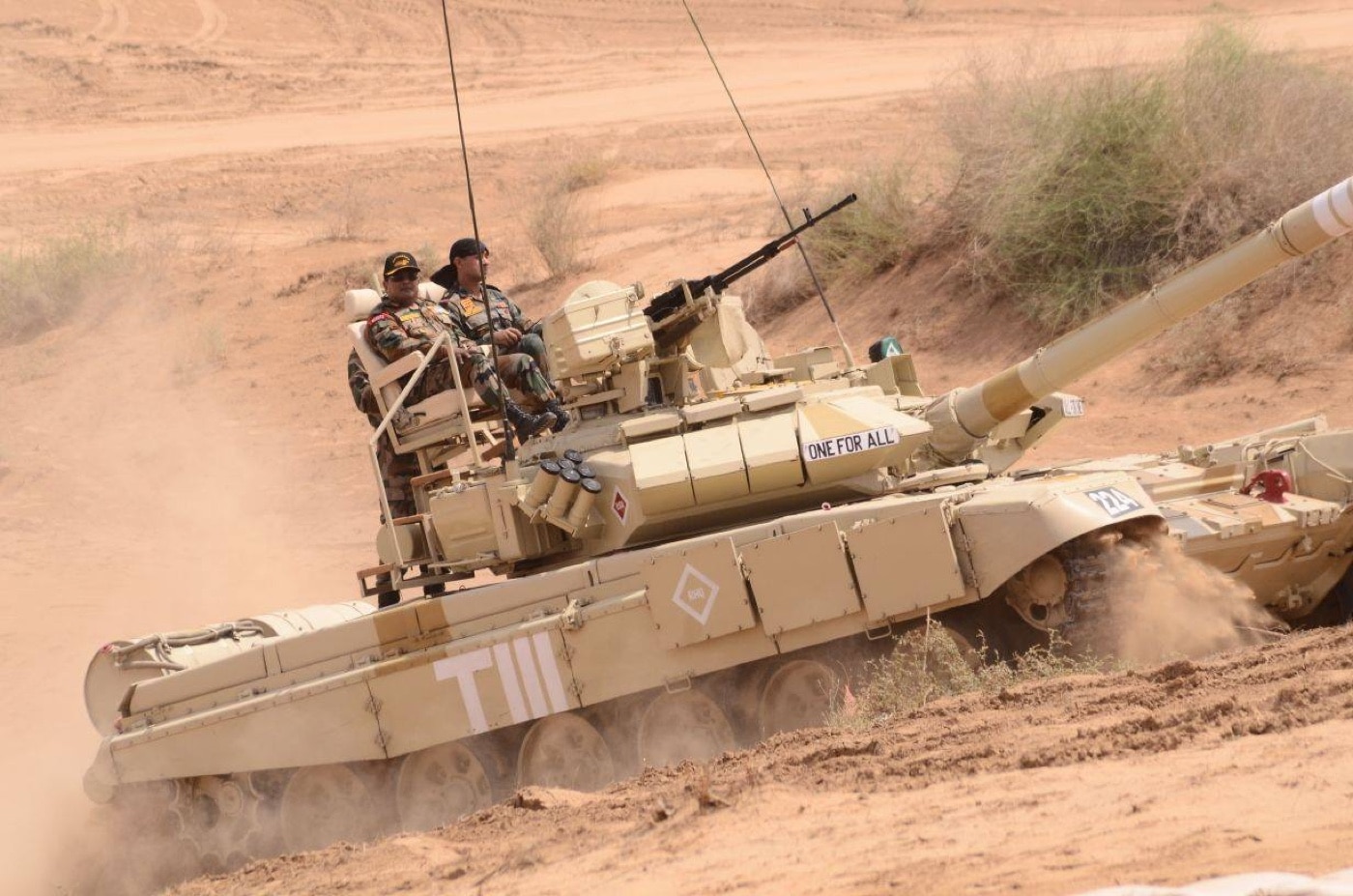
The situation hasn’t been much better in Ukraine.
According to online open-source intelligence data, as of this April, the Kremlin has lost at least 60 T-90s — including more than a dozen that were simply abandoned by their crews and then captured by Ukrainian forces. More than half have also been destroyed in the fighting, fallen victim to man-portable “top attack” anti-tank weapons including the U.S.-made FGM-148 Javelin, British NLAW, and even the Swedish AT4.
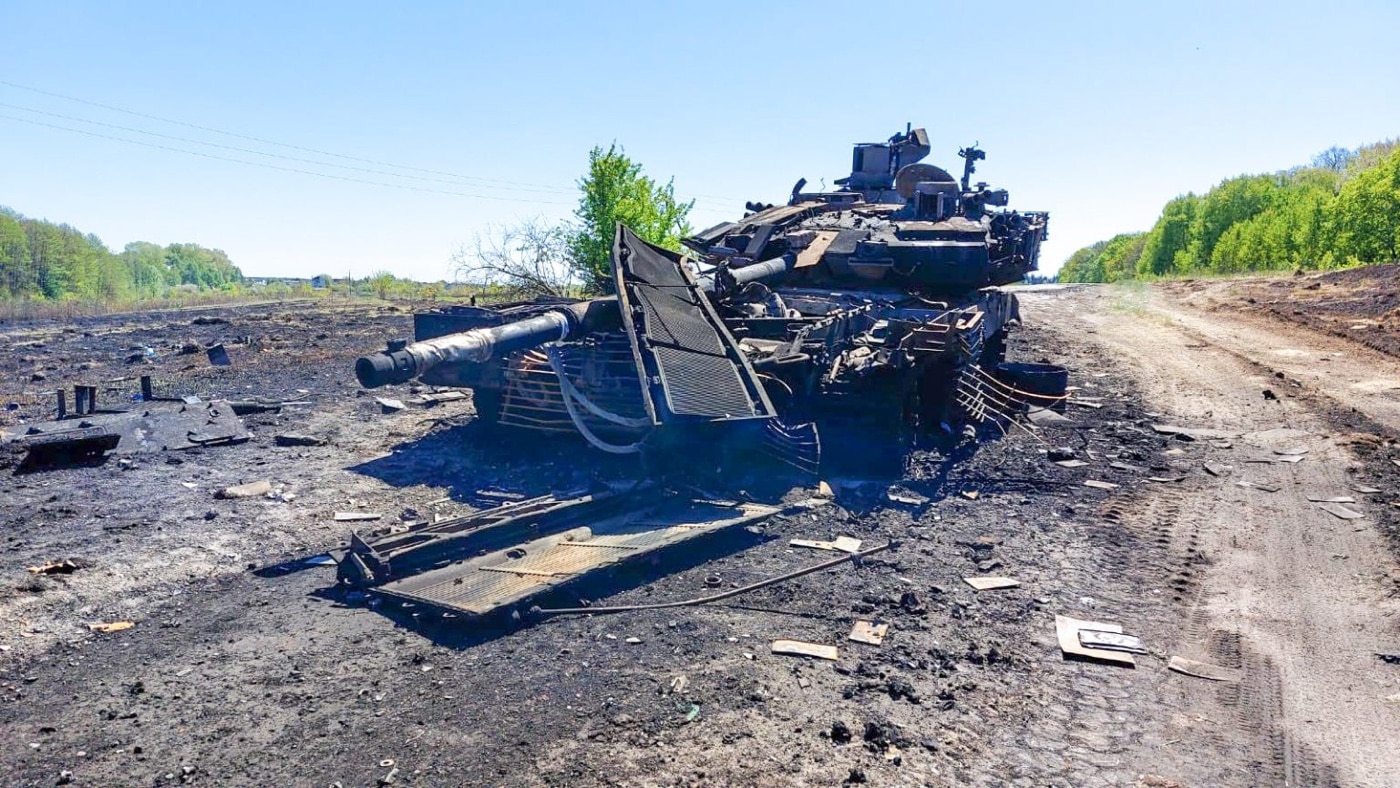
Russia has attempted to counter the top-attack missile strikes with the addition of improved steel grilles or “cope cages,” but the effectiveness has been questioned by military analysts. Likewise, the grilles increase the tank’s weight, and also increase its visual profile. The bigger consideration with the improvised protection is that it can make it more difficult for a crew to escape from a burning tank.
Conclusion
Since first being introduced more than three decades ago, the T-90 has been steadily updated and improved. The T-90M “Proryv-3” is an enhanced version that featured a modernized turret design, and is equipped with an advanced fire control system, and the new Relikt ERA. Despite the new capabilities, several of the Proryv-3 models have been destroyed in the fighting, while two have been captured by Kyiv’s forces.
There may be some irony that the final tank designed in the Soviet Union is now being employed in a war between two of its former members.
Editor’s Note: Be sure to check out The Armory Life Forum, where you can comment about our daily articles, as well as just talk guns and gear. Click the “Go To Forum Thread” link below to jump in!
Join the Discussion
Continue Reading
Did you enjoy this article?

 82
82








